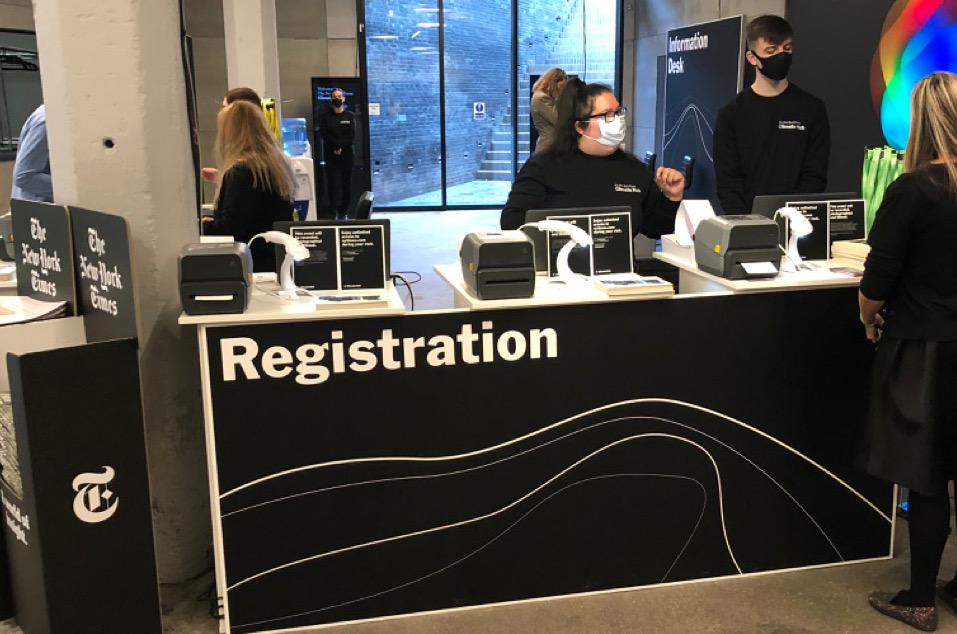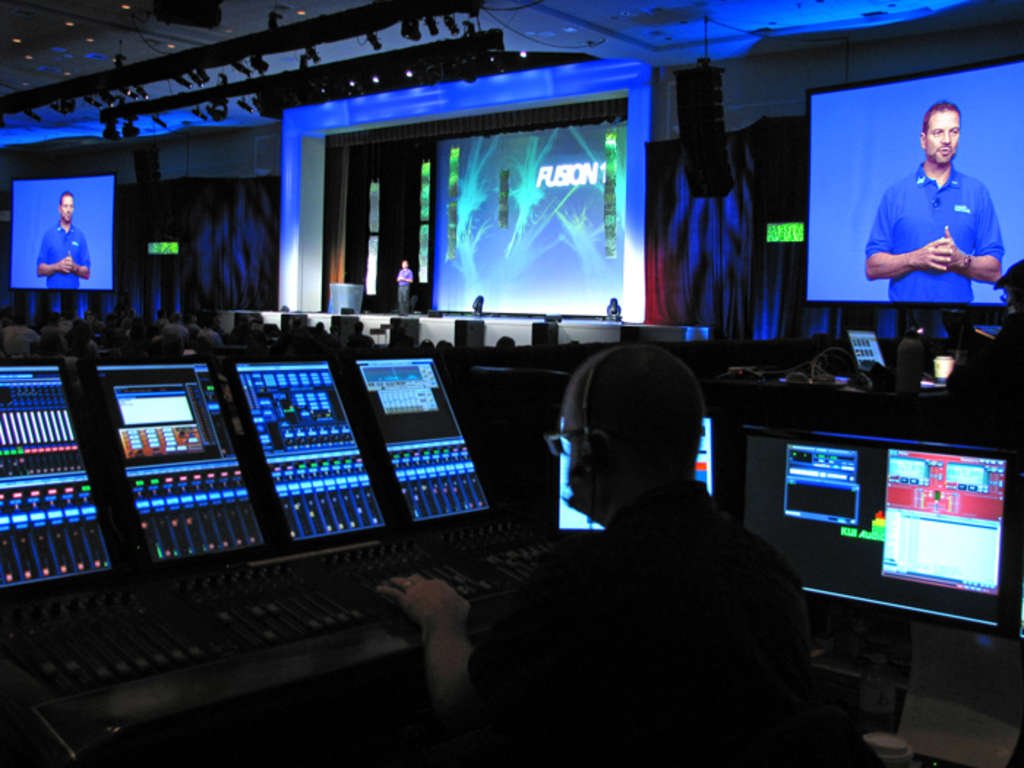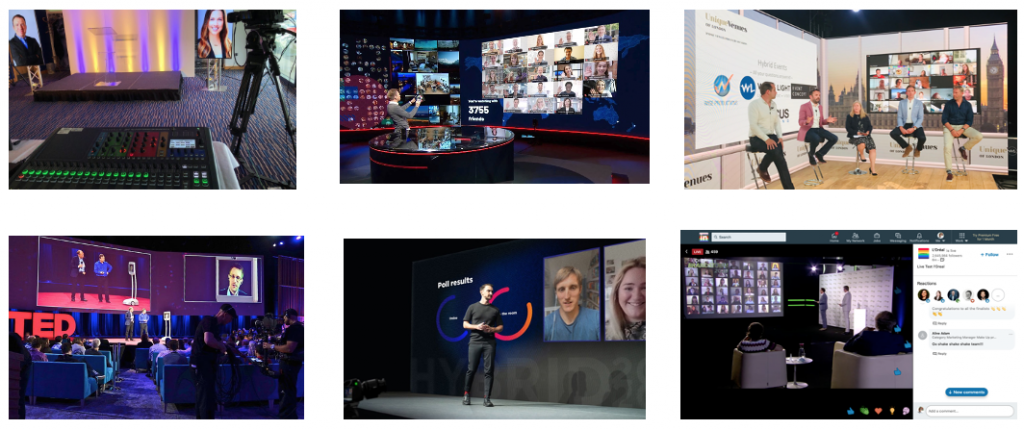Choosing a hybrid events platform
Choosing a technology platform for a hybrid event

As we move away from restriction following the Omnicron wave of Covid-19, the events industry is gearing us to some semblance of ‘normality’ after the pandemic. Or, to coin a cliché, ‘the new normal’, as we now learn to live with Covid-19 much like we live with the cold or flu. Of course, we don’t know if a new variant is going to hit us… but let’s be positive.
As live events pick up again, the Covid-19 pandemic is likely to linger in people’s minds for some time, resulting in many event attendees preferring to attend events from the comforts of their homes or offices – as they have done over the past two years by attending virtual events. This poses challenges for event planners, who have to manage both live and remote attendees… ie. hybrid events. Although this term is not new, executing a hybrid event will be new for many event planners. After defining the objectives of an event, the first step is often to choose a technology platform that has all the features required. Some of the factors planners need to consider when sourcing the ideal platform include:
- Event Registration and Delegate Management. With both in-person and remote attendees, the registration process must be flexible enough to accommodate both attendee types. Registration includes so much more than simply contact information – it can include session selection, travel details, ticketing, payments, appointment setting and more. It is important to plot the ‘customer journey’ of your in-person and virtual attendees separately, as you plan the registration process, to ensure they only fill in the fields they need to. Ideally, the platform should support ‘conditional logic’, so attendees only fill in the fields relevant to them.
- Automated Communications. From the initial invitation emails, through to reminders and joining instructions, the platform should make it easy to configure event communications automation. This feature should be integrated with registration, from which different ‘registration types’ can be identified – eg, , Live Attendees, Remote Attendees, Speakers, VIPs, etc. Such categorisations make it easy to ensure that only relevant communications are sent to each attendee. Email automation can be setup based on a time and date, or an action (or inaction) by the recipient. Eg, if a recipient has not registered x days after the invitation was sent, send them a reminder email.
- Onsite Badging and Session Scanning. The platform of choice should have integrated modules for these features. You want to avoid having separate systems for registration and badging, as you will have to export attendee data from the former and import it into the latter. This become very complex if, for example, you have personalised agendas / session selection, which will need to be setup on both the registration and badging systems.

Also, unless the client allows registration to close (which never happens!), the data in the registration system will always be out of sync in the badging system. An integrated system, however, will make life easy… especially if the system is intuitive enough to record all data changes in real-time. For example, if an attendee adds a session to their personalised agenda, this should automatically be picked up as the attendee scans into the session without having to print a new badge.
- Event Production. For hybrid events, event production takes on a whole new meaning – it is much more than simply placing a camera at the back of the room. As with any live event, audio visual and technical equipment and expertise will be required. Most events also have a camera crew recording the event – this is a must for hybrid events. Video data from all cameras is sent to an ‘encoder’, from where it is streamed to the virtual audience. This is through the venue’s internet connection, which is why the event planning stage must assess the suitability of the venue’s bandwidth for the requirement. Remote attendees would see the video through the event app, into which they have logged in.

A key consideration during the planning phase is whether to stream breakout rooms to the remote audience – if you have multiple breakout rooms, you will need to have streaming equipment and technical expertise in each room. Although this may be a good experience for virtual attendees, it may not be practical or cost-effective to stream multiple breakout rooms at the same time.
- The Event App. Most platforms have apps which can be viewed on both a mobile device and on a computer, and this app connects the live event with its remote attendees. Most apps have sections for the agendas, speaker bios, feedback, etc. but some of other features to look out for an event app include:
- It should be integrated with the core platform, so any changes on one are reflected on the other (i.e., change of session selection, or purchase of a new ticket)
- It should support real-time engagement features, like moderated Q&A, live polling, event and session chat, gamification, etc. for ALL attendees – that is, both in-person and remote.
- Many apps allow event attendees to network with each other, either through instant chat, or 1 to 1 video calls
- The livestream – you can watch the livestream of each session / breakout room on the app. Note there is commonly a delay of between 10 and 40 seconds between the live event occurring and the stream appearing on the app – this is normal, and needs to be considered when planning the live engagement activities
- The platform should be able to record all livestreams, and have them available for ‘on demand’ viewing after the live days of the event
- If required, the app should support closed captions or language translations
- For onsite attendees who are using their mobile device to participate in the event, a web app is preferred to a ‘native’ app, as the latter requires download of software from the IOS or Android app stores and can be confusing for attendees

- Sponsors and Exhibitors. Where exhibitor booths are required, they can be both physical and virtual. Both can be used to share marketing collateral, as well as make real-time contact with attendees. Physical booth personnel can use lead scanners to capture the contact details of leads after face-to-face discussions with visitors to their booths. Virtual booths can also be manned – remote attendees can use the chat or networking feature to make direct contact with booth assistants, in some cases, started a video chat similar to a Teams or Zoom call.
- Speaker management. Whereas live speakers need to come in early and follow the instructions of the technical team onsite, remote speakers need to ensure they have the right lighting, background, bandwidth, etc. through pre-arranged technical rehearsals. In some cases, full event rehearsals may be required ahead of the event
- Hybrid event variety. The picture says it all! And this is before we start talking about distributed hybrid events – it, the same event hosted in different locations

- Event Teams. Delivering a hybrid event should not be underestimated, and it is recommended that different teams are assigned for the live and virtual parts of the event. The two teams need to work in co-ordination, but on the event day, need to perform different functions. Key amongst these are:
- Delegate management – for remote attendees, this usually involves login issues, whereas an in-person attendees may need support from the registration desk onsite
- Production – whilst one team films the live event, a separate team has to produce the video feed before streaming it to the remote audience. This production could include speaker names (lower thirds), screen shares or pre-recorded videos.
- Data, data, data. Because of the digital nature of hybrid events, they generate so much data… but the trick is to ask the right questions of this data to gain valuable and actionable insights. Begin the event design with the end in mind – that is, list out all the data objectives when designing the event at the outset, and ensure the relevant data points are captured during the event.
How can Hybrid Event Solutions help?
Did you find this article useful? Sign up to our mailing list to receive updates from us on how to deliver great experiences to your live, virtual and hybrid event attendees.
